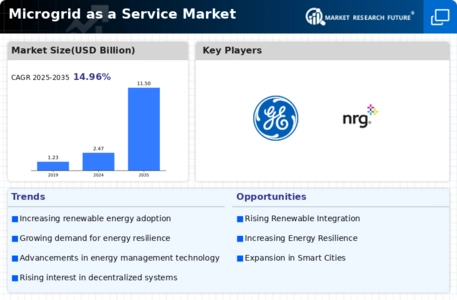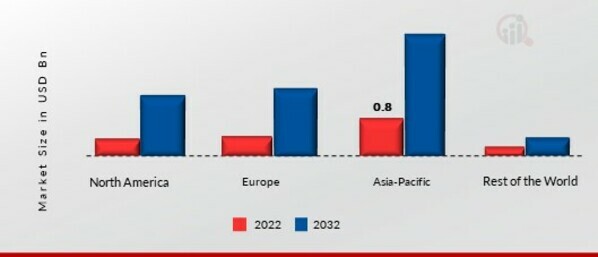Market Trends
Key Emerging Trends in the Microgrid as a Service Market
The Microgrid as Service (MaaS) market is experiencing a major flood in demand, changing some features of that market and its trajectory. As we sail the perplexities of a rapidly transforming energy landscape, microgrids seem to be a quite convenient solution that accompanies a lot of flexibility, reliability, and sustainability. You will observe a clear shift in the implementation of MaaS by different companies, while they are being pushed by the desire to increase the energy reliability and decrease the utilization of centralized power grid. This critical issue is manifested evidently in fields such as healthcare, manufacturing and data management where uninterrupted power supply is necessary for smooth functioning of various processes.
The fundamental role played by MaaS in fostering the growing world patterns of renewable energy sources is the rapid growth in the global attention on them. The establishment of microgrids in which various green tech innovations such as solar, wind, among others are used helps organizations to reduce their carbon footprint and achieve sustainability objectives. The states and other regulatory bodies in particular are also carrying out an important function by grading the early stage projects concerning clean energy, which contribute to the development of MaaS market. With the energy storage infrastructure component embedded within microgrids, the systems become more competent by storing excess energy during times of low demands and discharging it during peak consumption thereby supporting grid stability.
Apart from the environmental advantages, the monetary advantages of MaaS have started the debate. The scalability and flexibility hence displayed by microgrid setups support the streamlining of energy consumption within the organization which in turn leads to cost savings. Also, with the advent of 4th industrial revolution technologies like artificial intelligence and smart grid systems, the psychological muscle of microgrids is being further enhanced. In this case, the innovations allow for real-time observing, monitoring and predictive analysis, and thus improving in management and performance of MaaS offerings. Likewise, the organizations are extensively realizing the essence of investing in microgrid solutions to operate efficiently now and in the future.
The monetizing segment of the MaaS is moving forward with the new promise of operation and ownership of the external market players. This strategy is crucial as it opens a way through which an organization can enjoy the multitude of benefits of a microgrid without the upfront investment and technical competence expected for successful implementation. Vendors of MaaS assume the obligation of building their microgrids, installation, and maintenance and organizations, on their part, can strategize and focus on core business operations. The movement toward a pay-as-you go model coheres with a broader trend across industry where companies try to find new ways of offloading non-critical competencies to specialized suppliers.






Leave a Comment